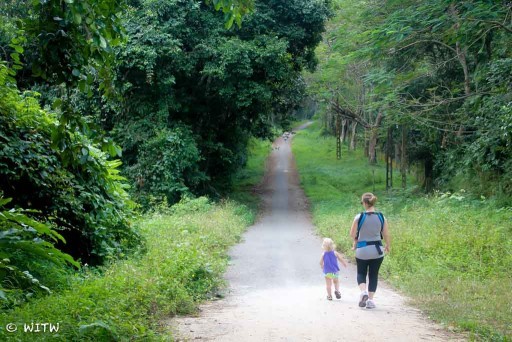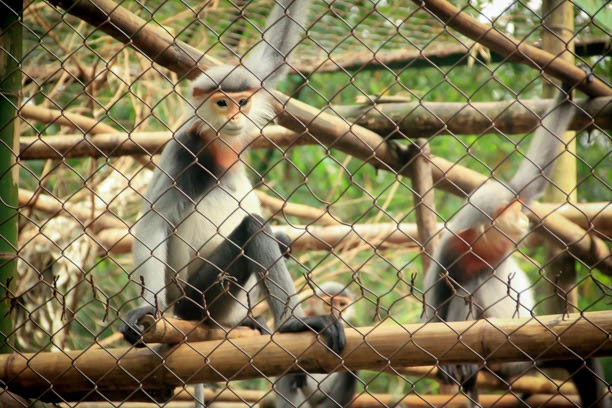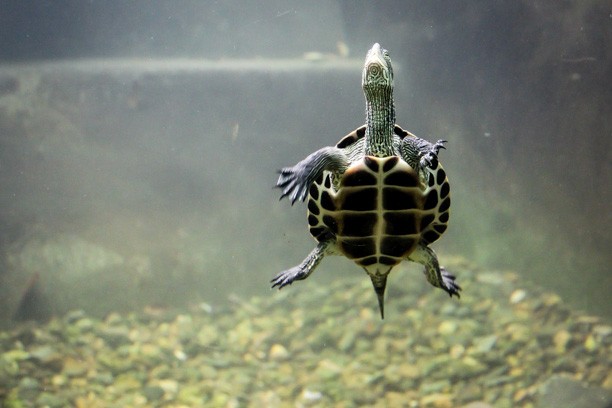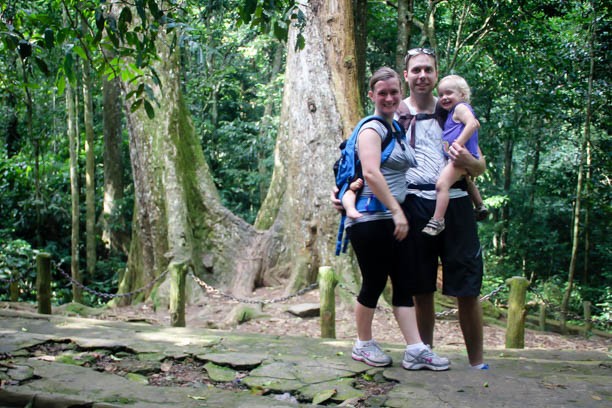Are you planning a trip to Vietnam and wondering, “How much time is needed for Cuc Phuong National Park?” SIXT.VN understands your desire to experience the natural beauty and rich biodiversity of Vietnam. We recommend at least a full day to explore the park’s highlights, though an overnight stay allows for a more immersive experience. This will let you truly appreciate the natural wonders, wildlife conservation efforts, and historical significance of Cuc Phuong, Vietnam’s oldest national park and we have all your transport needs covered, from airport transfers to private car hire. If you’re looking to delve deeper, consider longer treks, night tours, and cultural immersion in nearby Muong villages for unique Vietnam travel experiences, Ninh Binh adventures, and exploring Vietnamese culture.
1. What Makes Cuc Phuong National Park a Must-See Destination?
Cuc Phuong National Park stands out as a premier destination due to its rich biodiversity, conservation efforts, and historical importance. Established in 1962, it’s Vietnam’s oldest national park. According to the Cuc Phuong National Park’s official website, the park is home to over 2,000 species of plants, 300 species of birds, and various mammals, reptiles, and amphibians.
1.1. Biodiversity Hotspot
Cuc Phuong is a biodiversity hotspot, showcasing an incredible array of flora and fauna. The park is home to numerous endangered species, making it a crucial area for conservation efforts. Visitors can explore a variety of ecosystems, from lush forests to limestone karsts, each teeming with life.
1.2. Conservation and Rehabilitation
The park houses several conservation centers, including the Endangered Primate Rescue Center, Turtle Conservation Center, and Carnivore and Pangolin Conservation Center. These centers play a vital role in rescuing, rehabilitating, and releasing endangered animals back into the wild. According to a report by the Wildlife Conservation Society in 2022, these centers have significantly contributed to the preservation of several species.
 Endangered Primate Rescue CenterThe Endangered Primate Rescue Center is committed to protect endangered primates through rescue, rehabilitation, breeding, research, and education.
Endangered Primate Rescue CenterThe Endangered Primate Rescue Center is committed to protect endangered primates through rescue, rehabilitation, breeding, research, and education.
1.3. Historical Significance
Cuc Phuong National Park holds historical significance, having been consecrated by Ho Chi Minh during the Vietnam War. This highlights the park’s importance to the nation’s cultural and environmental heritage. The park’s ancient forest and diverse wildlife have been preserved for generations, making it a symbol of Vietnam’s commitment to conservation.
1.4. Accessibility and Exploration
Located approximately 120 km southwest of Hanoi, Cuc Phuong is easily accessible for both day trips and overnight stays. The park offers a range of activities, including hiking, bird watching, and exploring caves. Well-maintained trails cater to different fitness levels, making it suitable for families, solo travelers, and adventure seekers alike. SIXT.VN provides convenient transportation options, ensuring a smooth and enjoyable journey to and from the park.
2. Day Trip to Cuc Phuong National Park: What Can You Realistically Achieve?
A day trip to Cuc Phuong National Park is feasible and can provide a fulfilling experience, especially for those short on time. However, it’s essential to plan your itinerary carefully to maximize your visit.
2.1. Morning Activities
Start your day with a visit to the Endangered Primate Rescue Center, Turtle Conservation Center, and Carnivore and Pangolin Conservation Center. These centers offer a unique opportunity to see endangered animals up close and learn about conservation efforts. Allow at least 2-3 hours to explore these facilities thoroughly.
2.2. Hiking Options
Choose one of the shorter hiking trails, such as the Botanical Garden Trail (3km) or a section of the Thousand Year Old Tree Trail (7km). These trails are relatively easy to navigate and can be completed in 2-4 hours, depending on your pace and interest in the surrounding nature.
2.3. Lunch and Relaxation
Enjoy lunch at the park headquarters, where you can find a small restaurant serving local cuisine. Take some time to relax and recharge before continuing your exploration.
2.4. Afternoon Exploration
In the afternoon, consider visiting the Cave of Prehistoric Man, an archaeological site showcasing evidence of early human habitation. This cave provides insights into the region’s history and is a fascinating stop for history enthusiasts.
2.5. Time Constraints
A day trip requires efficient time management. The two-hour drive from Hanoi means you’ll spend approximately four hours traveling. Prioritize the activities that interest you most and be prepared to adjust your plans if necessary.
2.6. Maximizing Your Day Trip
To make the most of your day trip, consider these tips:
- Start early: Leave Hanoi as early as possible to maximize your time in the park.
- Plan your route: Decide which attractions you want to visit and map out the most efficient route.
- Pack essentials: Bring water, snacks, sunscreen, insect repellent, and comfortable hiking shoes.
- Hire a private car: SIXT.VN offers reliable car rental services, ensuring a comfortable and convenient journey.
3. The Benefits of an Overnight Stay in Cuc Phuong National Park
While a day trip offers a glimpse of Cuc Phuong, an overnight stay allows for a more immersive and rewarding experience. Spending the night in the park enables you to explore at a more relaxed pace, engage in additional activities, and connect with nature more deeply.
3.1. Relaxed Exploration
With an overnight stay, you can explore the park without the pressure of time constraints. This allows you to fully appreciate the natural beauty and biodiversity of Cuc Phuong. You can take your time on the trails, observe wildlife, and enjoy the peaceful atmosphere.
3.2. Nighttime Activities
One of the significant advantages of staying overnight is the opportunity to participate in night tours. These tours offer a unique perspective on the park’s nocturnal wildlife. With the help of a guide, you can spot various animals, including civets, owls, and insects, that are active at night.
3.3. Deeper Immersion
An overnight stay allows for a deeper immersion into the park’s natural environment. You can wake up to the sounds of the forest, breathe in the fresh air, and feel a closer connection to nature. This can be a transformative experience, providing a sense of peace and tranquility.
3.4. Longer Treks
If you’re an avid hiker, an overnight stay enables you to undertake longer and more challenging treks. Cuc Phuong offers several multi-day hiking trails that take you deeper into the park’s wilderness. These treks often include homestays in local Muong villages, providing a unique cultural experience.
3.5. Community Engagement
Staying overnight in Cuc Phuong allows you to support local communities through homestays and other tourism-related activities. This contributes to sustainable tourism and helps preserve the cultural heritage of the region.
3.6. Accommodation Options
Cuc Phuong offers a range of accommodation options to suit different preferences and budgets. These include:
- Park Headquarters Guesthouses: Basic but comfortable guesthouses located at the park headquarters.
- Bong Substation: A more remote option with simple accommodations, ideal for those seeking tranquility.
- Homestays: Staying with a local family in a Muong village offers an authentic cultural experience.
You can book accommodation on the Cuc Phuong National Park’s official website.
4. Detailed Itineraries: Day Trip vs. Overnight Stay
To help you decide whether a day trip or an overnight stay is right for you, here are detailed itineraries for both options.
4.1. Day Trip Itinerary
- 6:00 AM: Depart from Hanoi. SIXT.VN provides reliable car rental services for a comfortable journey.
- 8:00 AM: Arrive at Cuc Phuong National Park.
- 8:30 AM – 11:30 AM: Visit the Endangered Primate Rescue Center, Turtle Conservation Center, and Carnivore and Pangolin Conservation Center.
- 11:30 AM – 12:30 PM: Have lunch at the park headquarters.
- 12:30 PM – 4:30 PM: Hike the Botanical Garden Trail (3km) or a portion of the Thousand Year Old Tree Trail (7km).
- 4:30 PM – 5:30 PM: Explore the Cave of Prehistoric Man.
- 5:30 PM: Depart from Cuc Phuong National Park.
- 7:30 PM: Arrive back in Hanoi.
4.2. Overnight Stay Itinerary
Day 1
- 9:00 AM: Depart from Hanoi. SIXT.VN offers convenient transportation options.
- 11:00 AM: Arrive at Cuc Phuong National Park.
- 11:30 AM – 12:30 PM: Check into your accommodation at the park headquarters or Bong Substation.
- 12:30 PM – 1:30 PM: Have lunch at the park headquarters.
- 1:30 PM – 4:30 PM: Visit the Endangered Primate Rescue Center, Turtle Conservation Center, and Carnivore and Pangolin Conservation Center.
- 4:30 PM – 6:00 PM: Relax and explore the park headquarters area.
- 6:00 PM – 7:00 PM: Have dinner at the park headquarters.
- 7:30 PM – 9:30 PM: Participate in a night tour to observe nocturnal wildlife.
Day 2
- 7:00 AM – 8:00 AM: Have breakfast at the park headquarters.
- 8:00 AM – 12:00 PM: Hike the Thousand Year Old Tree Trail (7km) or embark on a longer trek with a guide.
- 12:00 PM – 1:00 PM: Have lunch at the park headquarters.
- 1:00 PM – 3:00 PM: Visit the Cave of Prehistoric Man and explore the surrounding area.
- 3:00 PM: Depart from Cuc Phuong National Park.
- 5:00 PM: Arrive back in Hanoi.
5. Essential Tips for Visiting Cuc Phuong National Park
Whether you’re planning a day trip or an overnight stay, these essential tips will help you make the most of your visit to Cuc Phuong National Park.
5.1. Best Time to Visit
The best time to visit Cuc Phuong is during the dry season, from November to April. During this period, the weather is pleasant, with lower humidity and less rainfall. This makes hiking and exploring the park more enjoyable. The rainy season, from May to October, can be challenging due to heavy rainfall, muddy trails, and increased insect activity.
5.2. What to Pack
- Comfortable hiking shoes: Essential for exploring the park’s trails.
- Lightweight, breathable clothing: The weather can be hot and humid, so opt for moisture-wicking fabrics.
- Rain gear: Even during the dry season, it’s a good idea to bring a raincoat or umbrella.
- Insect repellent: Mosquitoes and other insects can be prevalent, especially during the rainy season.
- Sunscreen: Protect your skin from the sun’s harmful rays.
- Hat and sunglasses: Provide additional protection from the sun.
- Water bottle: Stay hydrated, especially during hikes.
- Snacks: Keep your energy levels up with trail mix, energy bars, or fruit.
- Camera: Capture the park’s stunning scenery and wildlife.
- Binoculars: Enhance your wildlife viewing experience.
- First-aid kit: Include essentials like band-aids, antiseptic wipes, and pain relievers.
- Cash: While some establishments may accept credit cards, it’s always a good idea to have cash on hand, especially for smaller vendors and entrance fees.
5.3. Health and Safety
- Stay hydrated: Drink plenty of water, especially during hikes.
- Protect yourself from insects: Use insect repellent and wear long sleeves and pants when possible.
- Be aware of wildlife: Avoid approaching or feeding animals.
- Stick to marked trails: This helps prevent getting lost and minimizes your impact on the environment.
- Inform someone of your plans: Let a friend or family member know your itinerary and expected return time.
- Check the weather forecast: Be prepared for changing weather conditions.
- Follow park regulations: Adhere to all rules and guidelines set by park authorities.
5.4. Respect the Environment
- Leave no trace: Pack out everything you pack in, and dispose of waste properly.
- Stay on trails: Avoid trampling vegetation and disturbing wildlife habitats.
- Minimize noise: Keep noise levels down to avoid disturbing animals and other visitors.
- Do not collect souvenirs: Leave natural objects like rocks, plants, and shells in their natural environment.
- Support sustainable tourism: Choose eco-friendly accommodations and tour operators.
6. Exploring the Wildlife Conservation Centers
Cuc Phuong National Park is home to several wildlife conservation centers that play a crucial role in protecting endangered species. These centers offer visitors a unique opportunity to learn about conservation efforts and see these animals up close.
6.1. Endangered Primate Rescue Center
The Endangered Primate Rescue Center (EPRC) is one of the highlights of Cuc Phuong National Park. Established in 1993, the EPRC is dedicated to rescuing, rehabilitating, and breeding endangered primates native to Vietnam. The center houses over 150 primates from 15 different species, including langurs, gibbons, and lorises.
 Monkeys at the Endangered Primate Rescue CenterA group of playful monkeys living safely in the Endangered Primate Rescue Center
Monkeys at the Endangered Primate Rescue CenterA group of playful monkeys living safely in the Endangered Primate Rescue Center
Visitors can take a guided tour of the EPRC to learn about the primates and the center’s conservation efforts. The tours provide insights into the threats facing these animals, such as habitat loss and hunting. You can observe the primates in their enclosures, which are designed to mimic their natural habitat.
6.2. Turtle Conservation Center
The Turtle Conservation Center (TCC) is dedicated to protecting Vietnam’s endangered turtle and tortoise species. The center houses over 600 turtles from 19 different species. Many of these turtles have been rescued from illegal wildlife trade or confiscated from poachers.
 Turtle Conservation CenterA turtle basks in the sun at the Turtle Conservation Center
Turtle Conservation CenterA turtle basks in the sun at the Turtle Conservation Center
Visitors can learn about the different turtle species and the challenges they face. The TCC also conducts research and breeding programs to help increase turtle populations. The center works closely with local communities to raise awareness about turtle conservation.
6.3. Carnivore and Pangolin Conservation Center
The Carnivore and Pangolin Conservation Center (CPCC) focuses on protecting Vietnam’s endangered carnivores and pangolins. The center rescues and rehabilitates animals that have been injured or confiscated from illegal wildlife trade. The CPCC also conducts research on carnivore and pangolin populations in the wild.
Unfortunately, the CPCC is not always open to the public due to the sensitive nature of the animals and ongoing conservation efforts. However, visitors can still learn about the center’s work through educational displays and information provided at the park headquarters.
7. Hiking Trails: A Hiker’s Paradise
Cuc Phuong National Park offers a variety of hiking trails to suit different fitness levels and interests. From easy nature walks to challenging multi-day treks, there’s something for everyone.
7.1. Botanical Garden Trail (3km)
This easy trail is perfect for families with young children or those looking for a leisurely stroll. The trail winds through the park’s botanical garden, showcasing a diverse collection of plant species. It’s a great way to learn about the park’s flora and enjoy the peaceful surroundings.
7.2. Thousand Year Old Tree Trail (7km)
This moderate trail takes you to a giant tree estimated to be over 1,000 years old. The trail passes through lush forests and offers opportunities to see wildlife, such as birds and butterflies. The highlight of the hike is the ancient tree, which is an impressive sight.
 Thousand Year Old Tree TrailHikers pose next to the majestic Thousand Year Old Tree.
Thousand Year Old Tree TrailHikers pose next to the majestic Thousand Year Old Tree.
7.3. Silver Cloud Peak Trail (6.5km)
This challenging trail takes you to the summit of Silver Cloud Peak, the highest point in Cuc Phuong National Park. The trail is steep and rugged, but the panoramic views from the top are well worth the effort. This hike is best suited for experienced hikers in good physical condition.
7.4. Multi-Day Treks
Cuc Phuong offers several multi-day trekking options that take you deeper into the park’s wilderness. These treks often include homestays in local Muong villages, providing a unique cultural experience. Multi-day treks require a guide and advance booking.
8. Cultural Immersion: Visiting Muong Villages
One of the highlights of visiting Cuc Phuong National Park is the opportunity to immerse yourself in the local culture by visiting Muong villages. The Muong are an ethnic minority group with a rich cultural heritage.
8.1. Homestays
Staying in a homestay in a Muong village is a great way to experience the local culture firsthand. You’ll have the opportunity to live with a local family, eat traditional food, and learn about their customs and traditions. Homestays typically offer basic but comfortable accommodations.
8.2. Cultural Activities
Participate in cultural activities such as traditional music performances, weaving demonstrations, and rice harvesting. These activities provide insights into the Muong way of life and help preserve their cultural heritage.
8.3. Responsible Tourism
When visiting Muong villages, it’s important to practice responsible tourism. Respect local customs, dress modestly, and ask permission before taking photos. Support the local economy by purchasing handicrafts and souvenirs directly from villagers.
9. Booking Your Trip with SIXT.VN
SIXT.VN offers a range of services to make your trip to Cuc Phuong National Park seamless and enjoyable.
9.1. Transportation
SIXT.VN provides reliable car rental services, including private cars with drivers. This is a convenient way to travel from Hanoi to Cuc Phuong and explore the park at your own pace.
9.2. Accommodation
SIXT.VN can assist with booking accommodation at the park headquarters, Bong Substation, or in local Muong villages.
9.3. Tours and Activities
SIXT.VN offers guided tours of Cuc Phuong National Park, including hiking tours, wildlife viewing tours, and cultural tours.
9.4. Customer Support
SIXT.VN provides 24/7 customer support to assist with any questions or concerns you may have.
10. Frequently Asked Questions (FAQ)
10.1. Is Cuc Phuong National Park suitable for children?
Yes, Cuc Phuong National Park is suitable for children. The Botanical Garden Trail and the Endangered Primate Rescue Center are particularly popular with families.
10.2. Do I need a guide to hike in Cuc Phuong?
A guide is required for some of the longer and more challenging hiking trails. It’s recommended to hire a guide even for shorter trails to enhance your experience and learn more about the park’s flora and fauna.
10.3. What is the entrance fee to Cuc Phuong National Park?
The entrance fee to Cuc Phuong National Park is approximately 60,000 VND (around $2.50 USD) per person.
10.4. Are there restaurants in Cuc Phuong National Park?
Yes, there is a small restaurant at the park headquarters that serves local cuisine.
10.5. Can I swim in Cuc Phuong National Park?
Swimming is not allowed in Cuc Phuong National Park to protect the natural environment.
10.6. What kind of wildlife can I see in Cuc Phuong?
Cuc Phuong is home to a diverse range of wildlife, including primates, turtles, birds, and insects.
10.7. Is it safe to visit Cuc Phuong National Park?
Yes, Cuc Phuong National Park is generally safe for visitors. However, it’s important to take precautions against insects and wildlife, and to follow park regulations.
10.8. What should I wear when visiting Cuc Phuong National Park?
Wear comfortable hiking shoes, lightweight clothing, and a hat. It’s also a good idea to bring rain gear and insect repellent.
10.9. How far is Cuc Phuong National Park from Hanoi?
Cuc Phuong National Park is approximately 120 km (75 miles) southwest of Hanoi. The drive takes about 2 hours.
10.10. Can I book accommodation in Cuc Phuong National Park online?
Yes, you can book accommodation on the Cuc Phuong National Park’s official website or through SIXT.VN.
Ready to explore Cuc Phuong National Park? Whether you’re looking for a quick day trip or an immersive overnight adventure, SIXT.VN is here to help. Contact us today to plan your perfect Vietnam travel experience!
Address: 260 Cau Giay, Hanoi, Vietnam
Hotline/Whatsapp: +84 986 244 358
Website: SIXT.VN



